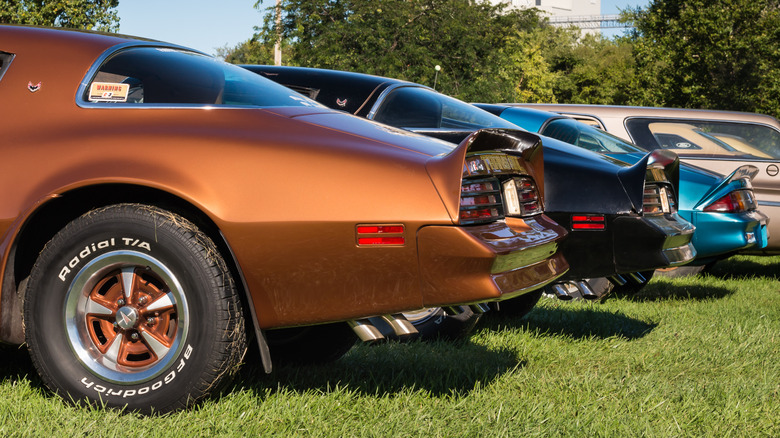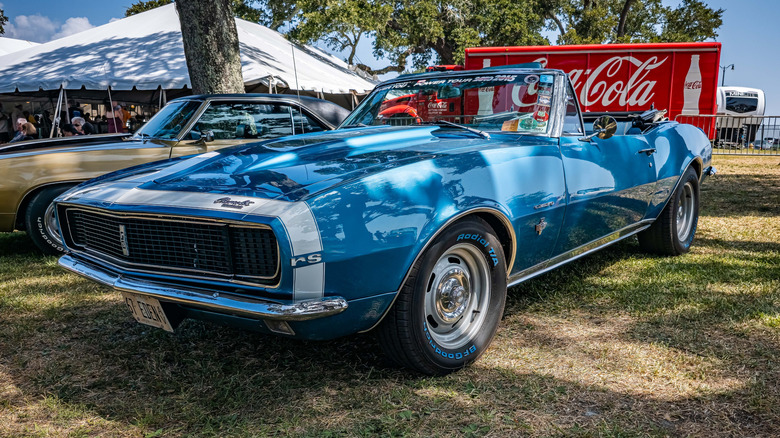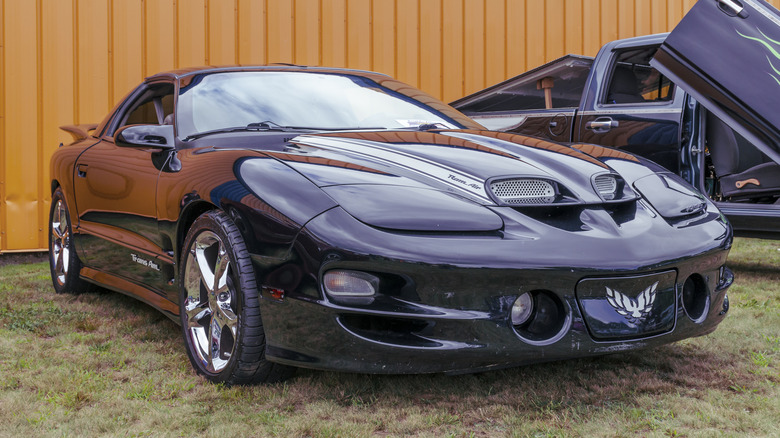Are The Chevy Camaro & Pontiac Firebird Actually The Same Car?
When General Motors responded to the incredible success of the Ford Mustang with the debut of its own pony car platform for 1967, it wasn't just the Chevrolet Camaro that was born, Pontiac also got in on the fun with its own Firebird. In the decades that followed, from the race track to the television screen, the Camaro and Firebird didn't just become some of the greatest American pony cars; they would go on to become automotive icons.
From the Bandit Trans Ams of the '70s to the IROC-Zs of the '80s and the LS1-powered modern muscle rocketships the late '90s, the Camaro and Firebird had a 35-year run of parallel adventures, each developing its own cultural cache along the way. How similar were these two GM pony cars? Were the Camaro and Firebird simply the same car with different badges?
That all depends on your definition of same car. From 1967 until 2002, both the Camaro and Firebird were built on the same General Motors F-body platform, and they always shared most of their dimensions and general profile. They also shared their transmissions, suspension design, and many other parts. Still, there have also been some significant differences between the two, not just cosmetically, but under the hood as well. Typically, the earlier the generation, the more differentiation there was.
The Camaro and Firebird were pretty different
Looking at the first-generation and second-generation Camaros and Firebird side by side, it's easy to see that they share the same underlying platform and body shape, but the styling for each, particularly at the front end, is quite different, with the Firebird getting Pontiac's signature split grille. These styling differences are expected, but first and second generation Firebirds are also quite different than their Chevy counterparts under the hood.
In the late '60s, and long into the '70s, GM's different divisions all had their own unique engines. Camaros had Chevy engines, and Firebirds had Pontiac engines. The general displacement figures were often similar between the two cars, but the engines themselves were completely different. For example, in 1967 you could get Pontiac's advanced new overhead-cam inline-six in the Firebird, while the Camaro's inline-six was a traditional pushrod unit.
Later on, in 1973 and 1974, after the Camaro had dropped its big block V8 engine option, Pontiac still offered the mighty Firebird Trans Am SD455. With its 455 cubic inch V8, this pony car was considered by many to be the last gasp of the original muscle car era, with emissions rules and skyrocketing insurance rates shutting down the horsepower wars. In the early '80s, Pontiac even offered a short-lived and ultimately unsuccessful turbocharged V8 in the Trans Am, with the Camaro doing no such experimentation.
Things changed in the corporate era
When the new third-generation F-body debuted for 1982, the Camaro and Firebird both used the same corporate Chevrolet engines. The cars continued to have their own unique styling elements and branding, but the significant mechanical differentiation was gone. The last Firebird to have an engine not offered in the Camaro was the limited-production 1989 Trans Am Turbo, which used a version of the turbocharged V6 from the Buick Grand National. From that point on, and through the fourth and final generation of the F platform, Camaro and Firebird were identical under the hood.
After 2002, both models would be discontinued, as GM ended production of the F-body platform. It wasn't long, though, before rumors and then concepts of a new, retro-influenced fifth-generation Camaro began appearing. Once the new Camaro was greenlit for production, people naturally wondered if a new, retro-styled Firebird might eventually join the Pontiac lineup.
It ended up being a moot point. In 2009, GM announced the entire Pontiac brand was being shut down. After Pontiac joined GM's growing list of discontinued brands, the Camaro would go on alone for two generations before Chevrolet pulled the plug on its legendary pony car after the 2024 model year.


